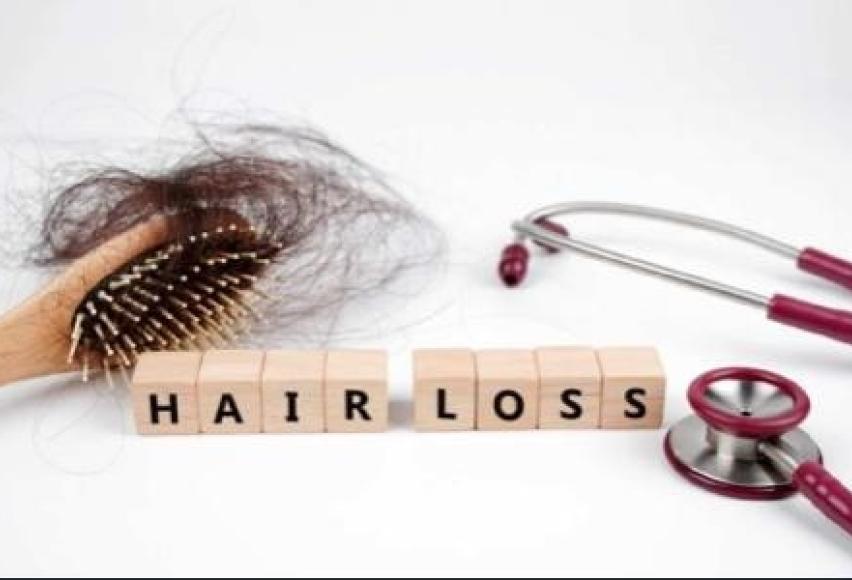Skin Picking and Hair Loss

Online test
Find out the severity of your symptoms with this free online test
 Dermatillomania or skin-picking disorder manifests in many forms. Common areas that are the focus of skin picking include the face, arms, neck, and scalp. Skin-picking disorder is part of a cluster of disorders known as Body-Focussed Repetitive Behaviour (BFRB). When dermatillomania presents as an obsessive-compulsive scalp-picking behaviour, it can often be confused with another BFRB called trichotillomania. Trichotillomania is a hair-pulling disorder, which leads to hair loss and sometimes baldness. However, scalp-picking is motivated specifically by the person’s urge to pick at the skin of the scalp, whereas hair-pulling is the urge to pull the hair out of the scalp.
Dermatillomania or skin-picking disorder manifests in many forms. Common areas that are the focus of skin picking include the face, arms, neck, and scalp. Skin-picking disorder is part of a cluster of disorders known as Body-Focussed Repetitive Behaviour (BFRB). When dermatillomania presents as an obsessive-compulsive scalp-picking behaviour, it can often be confused with another BFRB called trichotillomania. Trichotillomania is a hair-pulling disorder, which leads to hair loss and sometimes baldness. However, scalp-picking is motivated specifically by the person’s urge to pick at the skin of the scalp, whereas hair-pulling is the urge to pull the hair out of the scalp.
Does picking scalp cause hair loss?
While hair-pulling directly removes hair from the scalp, causing immediate hair loss, scalp-picking does not directly target the hair strands or follicles. Unfortunately the hair strands and follicles inevitably become damaged with repetitive picking at scalp skin. Constant picking at the scalp skin can cause the area to become sensitive and sore, sometimes causing bleeding and open wounds on the scalp. This can result in the skin cells on sensitive areas losing its ability to heal efficiently, often leading to hair loss. Sometimes scalp-pickers do pull hair out in order to gain easier access to the scalp. The formation of scar tissue on the scalp after an area of skin has been picked open can exacerbate the picking behaviour, with the person resorting to picking at the scab. This further damages the skin tissue, reinforcing the cycle.
Can scalp-picking cause baldness?
Repeated picking at the scalp skin can also cause damage to the hair follicles. The damage occurs below the surface of the skin so it is not visible to the naked eye, apart from patchy hair loss or thinning of the hair that occurs. It is important to distinguish between scratching of the scalp due to a dermatological condition which may cause itching; and scratching or picking at the scalp skin due to an obsessive compulsion to fulfill the urge to pick or scratch. People who suffer with dermatillomania pick and scratch at the scalp regardless of the discomfort or pain that follows. In severe cases the picking can cause the open skin to become sensitive to shampoos, water, and even air, impeding the person’s daily function. Yet, despite this, the person cannot resist the urge to continue picking at the scalp. This can result in the removal of the protective covering on the individual hairs, from the hair shaft. This weakens the hair shaft, leading to permanent damage, breakage and hair loss. When the hair follicles are permanently damaged, and are replaced with scar tissue, this is known as scarring alopescia. Initially the person may experience gradual hair loss with no noticeable symptoms, and can go undetected for a long time. In some cases where follicles on the periphery of a bald patch are not completely destroyed, the hair is able to re-grow. However, if the person continues to engage in repetitive scalp picking, often all that remains are scars on the scalp to show where the follicles once were. When the follicles are damaged beyond repair, this can lead to baldness.
Online test
Find out the severity of your symptoms with this free online test
Start your journey with SkinPick
Take control of your life and find freedom from skin picking through professional therapy and evidence-based behavioral techniques.
Start Now



